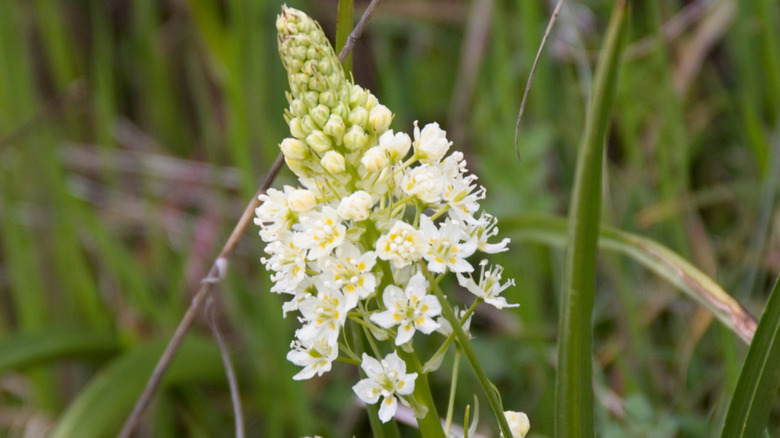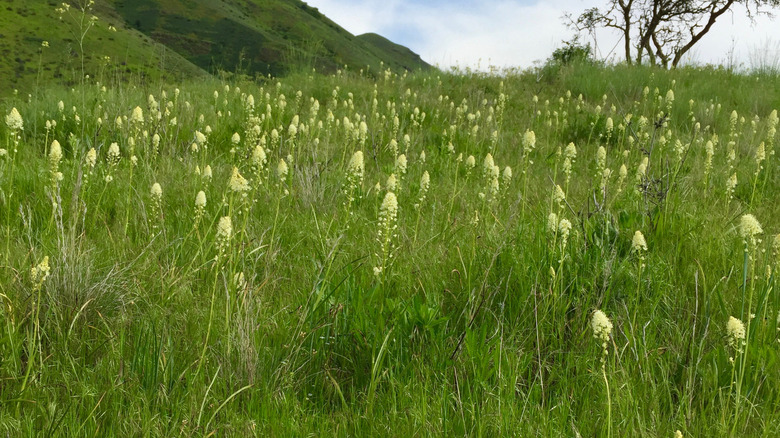The Dangerous Sounding Plant To Look Out For In The Western US
We may receive a commission on purchases made from links.
While the name is a clear indicator that it is dangerous, if you are unfamiliar with death camas, you may not know this plant can be deadly. However, this innocuous-looking plant (often mistaken for a wild onion) is extremely poisonous, capable of causing severe sickness and, in extreme cases, even death in humans. It is even more dangerous to animals, as livestock such as cattle and sheep are particularly susceptible to its toxins if they ingest it.
Death camas' toxic traits are a result of zygacine, which is classified as a steroidal alkaloid, which makes the bulbs and leaves of the plant toxic when ingested. Unfortunately, there is no treatment that has proven effective for animals. Depending on the amount ingested, they may have symptoms ranging from nausea to weakness and difficulty breathing. If enough of the plant is taken in, coma or even death can be the result. Humans can experience similar symptoms, though atropine and dopamine have proven successful treatments, so deaths are relatively rare.
There are more than a dozen species of death camas found throughout the United States. Although the plant is most commonly found in the Western United States, all but a handful of states throughout the Continental U.S. have at least one species of death camas present. Typically, livestock aren't drawn to the plant as a food source; because of this, most incidents regarding animals occur when other vegetation is scarce. So, it is advisable to make sure the animals are well-fed and prohibited from grazing in fields where death camas are prevalent.
How to identify death camas
Incidents among humans are typically a result of people attempting to forage wild plants to eat and misidentifying this dangerous plant. This is particularly common in areas where both death camas and the edible common camas exist, or when people are searching for wild onions. Therefore, it is essential to be able to accurately identify plants you intend to eat and those you should avoid — here are some tips for safely finding edible food in the woods.
While many believe it is safe to eat plants that they witness wildlife consuming, this is not always accurate. There is also a danger in relying on plant identification apps, as they, too, can be wrong. It is best to use these apps as a supplement and rely instead on printed materials, such as Edible Wild Plants: A Folding Pocket Guide to Familiar North American Species. Additionally, avoid eating anything you can not identify with absolute certainty.
All species of death camas have a white or off-white flower structure, similar to that of a lily. Their flower parts will occur in multiples of three. Common camas have a different flower structure, and their blooms tend to be purplish-blue. However, it can be difficult to tell them apart. The only surefire way is to mark the plants when they are in bloom earlier in the year. When it comes to distinguishing them from wild onions, the surest way is by scent. Death camas are typically odorless, while wild onions have a very strong, pungent onion odor.

